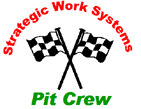The relationship between employee skills and equipment reliability
In nearly all of the 250 or so equipment–intensive plants and facilities I have visited, taught at, and worked in over the past 30 years, I have observed the relationships between the skills of employees and the reliability of the equipment. These observations may provide helpful insights for plant and facility managers who are troubled with unreliable equipment and high maintenance costs. Here are a few:
Observation Number 1: There is a direct correlation between the way the plant–floor people are treated and the reliability of the equipment for which they are responsible. Clean and reliable equipment usually means that employees’ needs are regularly addressed. The people are listened to. And the same applies to the equipment—its needs are also regularly addressed. The equipment needs are “listened to.” Responding in a proactive manner to people typically results in proactive maintenance of the equipment. A work culture of “equipment ownership” develops.
Observation Number 2: The highest levels of equipment reliability exist where skilled maintenance people operate the equipment. Likewise, the lowest levels of equipment reliability exist where unskilled or semi-skilled people operate the equipment. There is a direct correlation between equipment reliability and the equipment–specific skills and knowledge of equipment operators.
What can we conclude from these two observations? Equipment–specific skills and knowledge improve equipment reliability. The positive attitudes of employees lead to more reliable equipment. Not exactly rocket science, is it? So why don’t all managers and supervisors, all levels of decision–makers and leaders, in a business emphasize the well–being of their people and equipment alike? This is a real mystery to me.
Observation Number 3: In the United States, we are firmly in an era where there is a shortage of skilled employees in manufacturing and maintenance. Fewer young people are being encouraged to undertake that kind of work. There is a trend of having operators perform routine maintenance on their equipment. This trend makes sense only if handled properly—the right tasks, the right training, the right people, for the right reasons. However, overall productivity can suffer if “downsizing” maintenance results in more operator–performed maintenance that takes time away from their “operating” job roles and responsibilities. There must be a careful balance.
Observation Number 4: We are in another cyclical era of improving performance by “cutting costs.” Often, cost-cutting programs have a negative impact on employees’ workloads and/or attitudes, which can be directly linked to more equipment reliability problems. This increases costs and reduces operating efficiency or throughput—a vicious cycle, no doubt. It appears easier to look at overall cost reductions rather than finding ways to reduce the cost per unit produced by improving equipment reliability and work processes.
A vision of the future…
Reliable equipment reduces the overall operating cost by producing more first–pass quality production during the scheduled time available. People waiting for “maintenance” to fix their equipment, people waiting for the product at the next stages in the process, in-process inventory buffers, and customers waiting for their orders all add up to significant losses. These losses are exponentially higher than the actual cost of the emergency, reactive repair. Unreliable equipment is not necessarily a positive motivator of people either. If left unchanged, unreliable equipment leads to more unreliable equipment and then the “escalating costs must be cut!” Remember that there is a direct correlation between the reliability of the equipment and the way the plant–floor people are treated.
Henry Ford said it best when describing the Ford principles of management in his 1926 book, Today and Tomorrow:
“Put all machinery in the best possible condition, keep it that way, and insist on absolute cleanliness everywhere in order that a man may learn to respect his tools, his surroundings, and himself.”
This was one of the many concepts from Ford Motor Company that led to the development of the Toyota Production System, Total Productive Maintenance, and just–in–time manufacturing from the early 1900s through the 1970s in Japan.
The future of equipment–intensive businesses will always depend on the people who operate and maintain the equipment and their on–going dialogue with those who design, build, and manufacture the equipment. There is no way around it: People, the work processes that they use, and the equipment that they work on are the roots of productivity in the workplace of the 1920s … and the workplace of the future.
© 1998
Robert M. Williamson
Strategic Work Systems, Inc.
Columbus, NC 28722
RobertMW2@cs.com
![]() Download a PDF of this article by clicking here SkillsArticle
Download a PDF of this article by clicking here SkillsArticle
